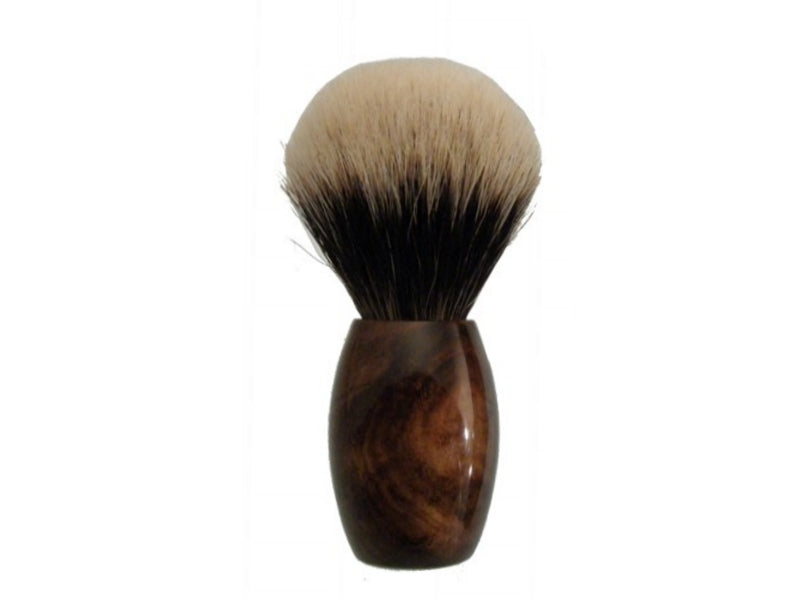Dr. Dittmar Germany
Caucasian walnut shaving brush
Caucasian walnut shaving brush
Couldn't load pickup availability
The extraction and processing of this root wood is extremely difficult (see below) and the trees must grow for many years before this wood can be extracted.
The wood, which was otherwise mainly used for individually crafted rifle butts, was probably first processed by us into shaving brushes, shaving soap bowls and razor handles.
(You can find the bowl and razor in the respective product categories or by entering " Caucasian " in the product search on the left.)
The brush is available with fine premium silvertip badger hair instead of 2-band silvertip. Please select the desired hair quality from the options.
Caucasian walnut is arguably the most expensive wood on earth. Harvesting and processing this root wood is extremely difficult (see below), and the trees must grow for many years before this wood can be harvested. Only connoisseurs will immediately recognize the value of this shaving brush. Everyone else will have to do their research... as we had to when we first heard about this wood, otherwise only used for rifle butts.
Genuine 2-band silvertip hair is popular with connoisseurs because it has more backbone than any other badger hair variety while still being very soft at the tips.
For production, particularly long and strong badger hair is required, which should also have the lightest tips possible.
In addition, our "two-bands" are tied very tightly, which also supports the "strong backbone" characteristic.
Mass:
Ring diameter: 22.5mm
Total height: approx. 105mm
Visible hair length (loft): approx. 52mm
Weight approx. 45 grams
Here are some interesting facts about the Caucasian walnut tree and its wood extraction and processing.
Walnut wood is one of the most valuable woods of all.
If you want to use the wood, you can't simply fell the tree; you have to dig it out ("stump it," "stuff it," or "crock it"). This expensive process isn't used for any other tree species. However, the most valuable burl wood is found in the lower part of a walnut trunk, extending deep into the ground as a root tuber. These grain patterns in the tubers, as well as in the forks of branches and the tops of the trunk, are very popular, as they display a vibrant yet unobtrusive pattern.
Almost every hunter has some walnut in their closet, as its special properties make this wood ideal for rifle stocks. It's tough, not very elastic, and doesn't shrink once dry. In terms of compressive and flexural strength, it achieves better values than oak and is also splinter-resistant.
But be careful:
The supply of walnut is very limited. Therefore, there are hardly any large solid wood furniture made from this species; it is usually veneered. And since nurseries have long focused on breeding high-yielding walnut trees rather than long-trunk varieties, it will be difficult to increase the supply in the medium to long term.
American walnut is often offered commercially alongside European walnut, but in these cases the wood usually comes from a walnut relative, the black walnut. Trade names such as African walnut, viola nut, and Tanganyika nut are also intended to refer to the walnut, but have nothing to do with it.
Source: homesolute.com


